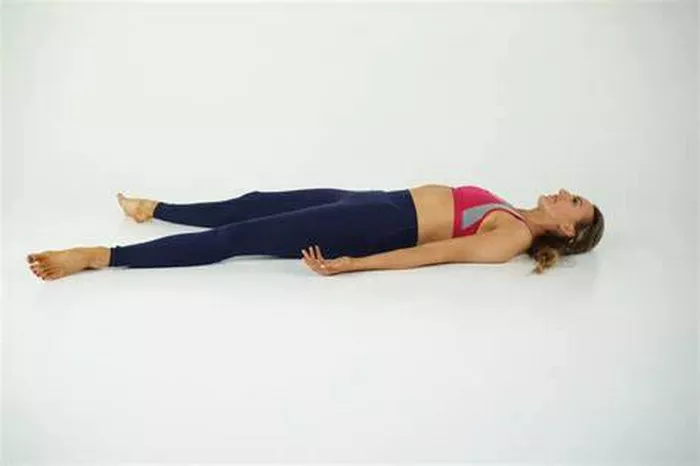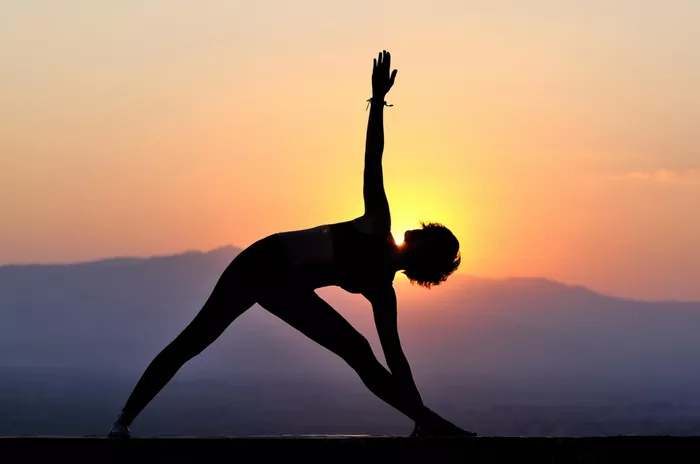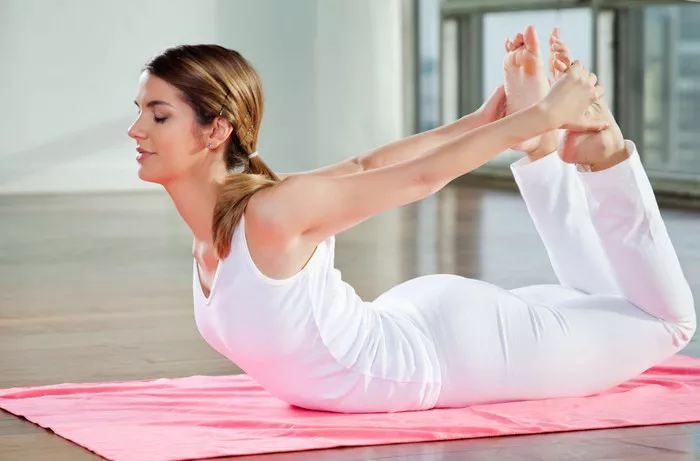Bound Angle Pose, known as Baddha Konasana in Sanskrit, is a seated yoga posture that stretches the hips, groin, and inner thighs while promoting flexibility, relaxation, and mental focus. This asana holds an important place in various yoga practices due to its numerous physical, emotional, and energetic benefits. Whether you are a seasoned practitioner or a beginner, the Bound Angle Pose can offer profound improvements in your body’s mobility, mental clarity, and overall well-being.
In this article, we will explore the purpose of Bound Angle Pose, its key benefits, proper alignment techniques, variations, common mistakes to avoid, and how it contributes to both physical and emotional health.
Understanding Bound Angle Pose (Baddha Konasana)
Before diving into its purpose, let’s break down the name of the asana to understand its meaning:
Baddha (Bound): This refers to the act of binding or connecting. In this posture, your feet are brought together and held in place, creating a “binding” effect.
Kona (Angle): This refers to the angle formed between your legs as they are bent and placed with the soles of the feet together.
Asana (Pose): As with all yoga postures, “Asana” simply means the seat or posture.
When practiced, Bound Angle Pose involves sitting on the floor, bringing the soles of your feet together, and holding your feet with your hands. Your knees are bent out to the sides, creating a diamond-like shape with your legs. This pose can be both calming and deeply restorative when performed mindfully.
Purpose of Bound Angle Pose: A Comprehensive Overview
The primary purpose of Bound Angle Pose is to offer a deep stretch to the hip flexors, groin, and inner thighs while also enhancing flexibility in the lower back. However, its benefits extend far beyond the physical. As a seated posture, Baddha Konasana encourages you to connect with your breath, bringing you into a state of relaxation and focus. The following are some of the core purposes and benefits of practicing this asana:
1. Hip and Groin Flexibility
The hips and groin are areas of the body that often become tight and stiff due to sedentary lifestyles, long periods of sitting, or lack of movement. Baddha Konasana targets these areas specifically, offering a deep stretch to the hip flexors and groin muscles. Over time, regular practice of this pose can improve flexibility in these regions, allowing for greater mobility in the hips and lower body.
Tight hips are often associated with discomfort and stiffness, especially in individuals who sit for long hours. The bound angle pose helps in releasing tension in the hip joints, which can lead to more fluid movement in daily activities. This stretch can also improve posture, reduce back pain, and increase the overall ease of movement in the lower body.
2. Opens the Hips and Promotes Better Posture
By focusing on the hips and groin, Bound Angle Pose naturally opens up the pelvis and strengthens the muscles that support the spine. When the hips become more open and flexible, it has a direct positive impact on posture.
People with tight hips often experience a misalignment of the pelvis, which can lead to poor posture and even discomfort in the lower back. Regular practice of Baddha Konasana can help correct pelvic misalignment, leading to improved posture both in and out of the yoga studio.
Additionally, this stretch works to release tension in the pelvic floor muscles, which is especially beneficial for individuals with stress or tension held in that area. A more open pelvis can create a sense of grounding and stability in your practice and daily movements.
3. Stretches the Inner Thighs and Adductors
The inner thighs (adductors) are a group of muscles that are often underused in many modern activities. These muscles are responsible for stabilizing the body during movement and helping to control the legs’ motion. Stretching the inner thighs through Baddha Konasana promotes greater flexibility in this area.
A deeper stretch of the adductors can increase range of motion, improve balance, and enhance athletic performance. Additionally, loosening up the inner thighs can provide relief from tension and discomfort caused by overexertion, especially in athletes or people who engage in activities like running or cycling.
4. Relieves Lower Back Tension
Tight hips and a stiff lower back often go hand-in-hand. In Baddha Konasana, the deep stretch in the hips and groin helps release accumulated tension from the lower back. The act of sitting upright with your spine aligned, while maintaining a deep stretch in the hips, encourages a lengthening of the entire spine, contributing to better spinal health.
For individuals with lower back pain, especially those who sit for prolonged periods, Baddha Konasana is a restorative posture that provides much-needed relief. It counteracts the effects of slouching or poor posture by promoting a natural curve in the lower back and encouraging spinal decompression.
5. Enhances Blood Circulation
Baddha Konasana stimulates circulation in the lower body, particularly in the pelvic region and the thighs. The stretching of the legs and hips increases blood flow to these areas, helping to improve the overall circulation in the body. This can reduce feelings of heaviness or fatigue in the legs, especially after long periods of sitting or standing.
Furthermore, the pose encourages better oxygenation of the body, which can help support the functioning of the organs and promote overall vitality. Improved blood circulation has a beneficial effect on reducing the risk of varicose veins, leg cramps, and other circulatory issues.
6. Stimulates the Digestive System
Bound Angle Pose is known for its ability to stimulate and activate the digestive organs. The deep bend at the hips massages the abdominal organs, encouraging better digestion and the elimination of waste. The compression of the abdomen increases blood flow to the digestive tract, which helps improve digestion and may alleviate bloating or constipation.
This benefit is particularly useful for individuals who suffer from digestive disorders, such as irritable bowel syndrome (IBS) or indigestion. The gentle pressure on the abdominal area also has a soothing effect on the body, helping to reduce stress-related digestive issues.
7. Calms the Mind and Reduces Stress
On a mental and emotional level, Bound Angle Pose is a powerful asana for promoting relaxation and calming the mind. By sitting in this position and focusing on the breath, practitioners are able to turn inward and cultivate mindfulness. The steady, deep breathing required in this pose helps activate the parasympathetic nervous system, which is responsible for the body’s “rest and digest” response.
Practicing this pose regularly can reduce feelings of anxiety, stress, and mental fatigue. It’s particularly helpful for people dealing with emotional strain, as it allows for a moment of stillness and introspection. Moreover, the act of physically opening the hips and groin is often associated with the release of emotional tension, which can lead to a greater sense of emotional clarity and balance.
8. Improves Postural Alignment and Flexibility in the Spine
Although Bound Angle Pose primarily targets the hips and groin, it also has a positive effect on the spinal column. The alignment of the spine in this pose encourages an upright posture, which helps to align the vertebrae and promote spinal health. A healthy spine contributes to overall flexibility, as it serves as the central support structure of the body.
By sitting upright and engaging the core muscles, practitioners activate the muscles along the length of the spine, improving both strength and flexibility. Over time, this can contribute to a more flexible and pain-free back.
9. Opens the Chest and Shoulders
While primarily a lower-body stretch, Bound Angle Pose also engages the upper body, particularly the chest and shoulders. When sitting upright, the chest naturally opens, promoting deeper breathing and improving lung capacity. This gentle opening of the chest can counteract the effects of rounded shoulders and chest tightness, which are common issues for individuals who spend long hours at desks or in front of screens.
Opening the chest in this way has a positive effect on posture, allowing for more balanced alignment between the shoulders, neck, and upper back.
10. Encourages Grounding and Centering
Baddha Konasana is a grounding pose that encourages connection to the Earth. With the soles of the feet touching each other and the legs splayed outwards, the practitioner is encouraged to feel stable and rooted. This grounding effect is beneficial for individuals who experience feelings of anxiety, restlessness, or disconnection.
By practicing this pose, you develop a sense of stability in both your physical body and your mind, which can help reduce feelings of overwhelm or unease. This grounding energy is often associated with promoting feelings of security, balance, and peace.
How to Perform Bound Angle Pose
To achieve the full benefits of Baddha Konasana, it is essential to perform the pose correctly. Follow these steps to practice Bound Angle Pose:
Start by Sitting: Begin seated on the floor with your legs extended in front of you. Sit with a straight spine, shoulders relaxed, and feet flexed.
Bring the Soles of Your Feet Together: Slowly bring your feet towards your pelvis, keeping the soles of your feet pressed together. Your knees should drop out to the sides, creating a diamond shape with your legs.
Hold Your Feet: Clasp your feet with your hands, bringing your heels as close to your body as is comfortable. Ensure that your spine remains tall and elongated.
Engage the Core: Engage your abdominal muscles to keep your spine straight and avoid collapsing forward. You can gently press your knees towards the floor, but avoid forcing them down.
Breathe Deeply: Focus on your breath, inhaling deeply to lengthen the spine and exhaling to relax deeper into the pose. Stay in the posture for as long as feels comfortable, typically 30 seconds to 1 minute for beginners.
Release and Relax: To come out of the pose, gently release your feet and extend your legs forward. Allow your body to relax for a moment before continuing with your practice.
Conclusion
Bound Angle Pose is a powerful and versatile yoga asana that offers a wide range of physical, emotional, and energetic benefits. It promotes flexibility in the hips, groin, and inner thighs while releasing tension in the lower back, improving circulation, and supporting digestive health. The pose also helps calm the mind, reduce stress, and cultivate a deeper sense of grounding and relaxation.
Whether you are looking to improve your posture, increase flexibility, or simply take a moment to reconnect with yourself, Baddha Konasana is an excellent addition to your yoga practice. With regular practice, you can experience both physical relief and emotional balance, making it a valuable tool for holistic health.
Related Topics:
























